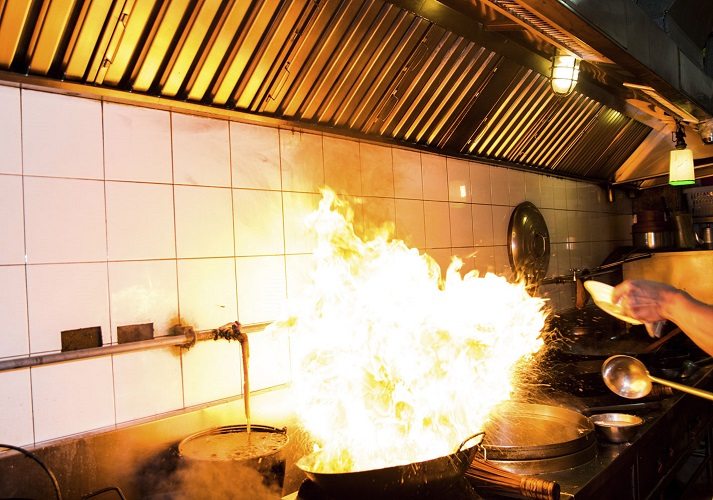For most people, food features very heavily as part of their Christmas celebrations and that often includes going out for a few extra meals. Inevitably that makes the next few weeks amongst the most hectic ones of the year for the catering industry. As kitchens become busier than usual, it’s important the people working in them retain a focus on fire safety. Are you responsible for a catering kitchen? And if so, are you confident you’ve done everything you can to keep your people, building, customers and business safe from fire? Don't worry our commercial kitchen safety guide is here to talk you through it.
Grease and oil accumulation
Catering kitchens present several major hazards but one of the main fire risks is due to the build-up of fat and oil. The accumulation of greasy deposits can be very common in equipment like grill pans and ovens as well as on hobs and kitchen surfaces so regular maintenance and cleaning is vital.
The build-up of these types of deposits in extraction system ductwork is a major hazard too. The grease and oil can accumulate into a mass of highly flammable deposits that are out of view therefore it’s easy to overlook the dangers they present. When that’s combined with the fact that ducting systems create a route through a building that enables fire to spread incredibly quickly, it’s clear to see the potential for a serious fire igniting that could get out of hand within moments. This fire broke out in January of this year; the fire moved quickly through the ducting into other parts of the building which also housed a gym, night club and a children’s soft play area and led to 70 people having to be evacuated. Luckily no one was injured but the damage and disruption was considerable.
Ducting and grease extraction systems aren’t easy to clean so make sure it’s done by someone who is properly trained and who has the correct equipment to clean out all the bends and corners of ducts where highly flammable grease deposits are often trapped.
Fire extinguishers and suppression
Part of managing the fire risk in commercial kitchens is being prepared if a fire did manage to break out. That includes having the correct type of fire extinguishers that are properly maintained and located in the right places. Wet chemical fire extinguishers are designed to be used on cooking oil and fat fires; they release a chemical spray that reacts with the oil and forms a heavy emulsion layer that puts out the fire. It’s worth consider installing a suppression system too. It can detect fire automatically and reacts by releasing a wet chemical agent that works in a similar way to the wet chemical fire extinguishers in order to rapidly extinguish a fire.
Staff awareness
Another important aspect is to ensure all staff are trained in fire safety. As well as helping them understand their role in keeping the kitchen environment clean from a fire safety perspective as well as a hygiene one, talk to them about other factors too. Are they aware of all the safety issues connected to using hot oil, particularly in equipment like deep fat fryers? Are any of them trained in the safe use of fire extinguishers? While kitchen staff can be transient, it’s important to make sure they have a grasp of basic fire safety issues and know how to evacuate safely and raise the alarm.
Even if it’s only a small one, a fire in a catering kitchen can lead to significant costs and disruption. It can also leave businesses open to being investigated for breaching legal obligations over satisfactory completion of and compliance with fire risk assessments. It could invalidate insurance if it turns out that inadequate steps were taken to address fire hazards or hazards weren’t properly identified in the first place. If you are responsible for running a catering business or department and need some assistance with making sure you’re managing all the risks adequately then we can help you. Please get in contact with us for advice about all aspects of fire safety management and installation of appropriate equipment in commercial kitchens.
One complete fire and security solution
Need a local team to help with fire safety and security?
